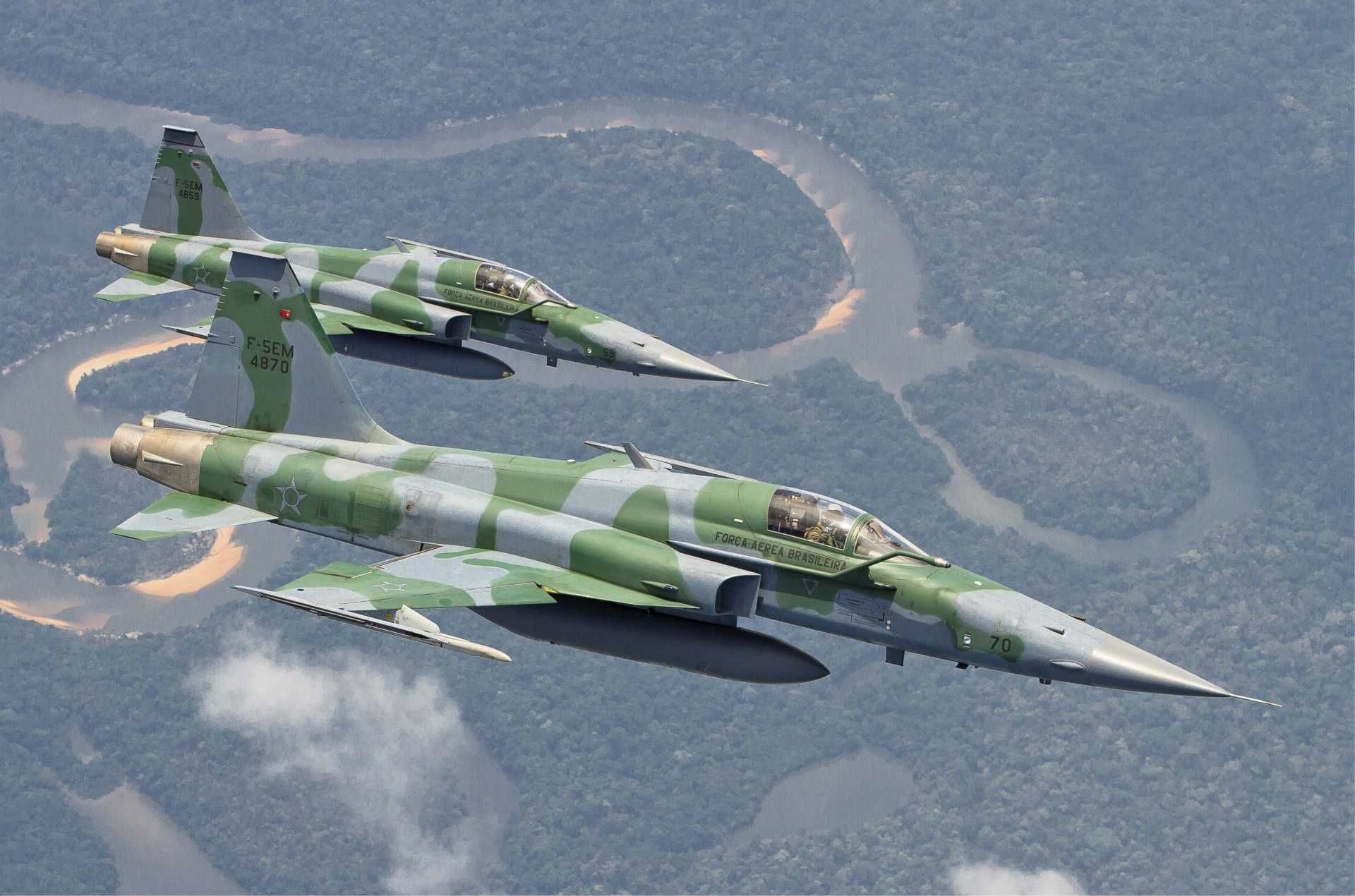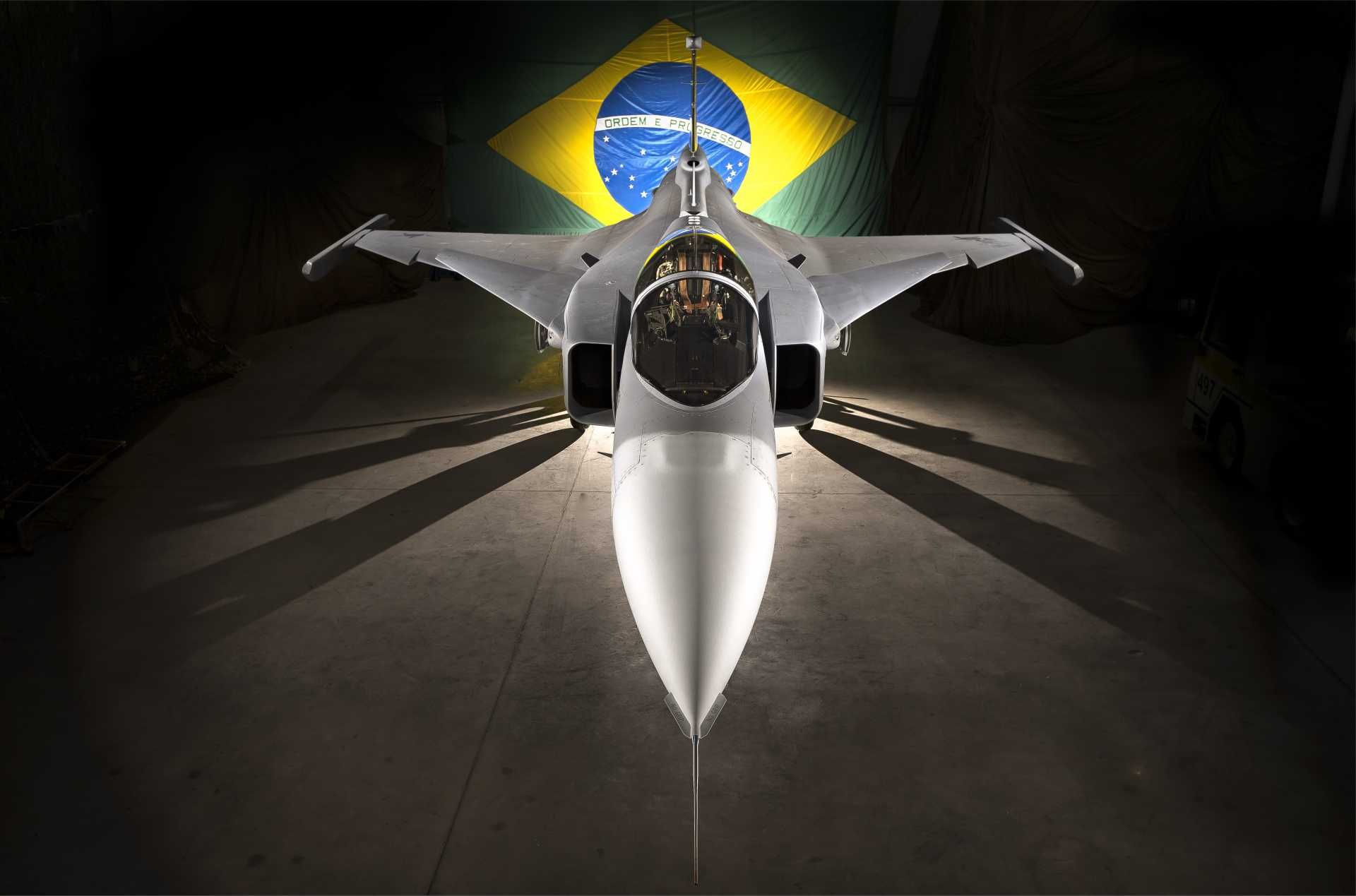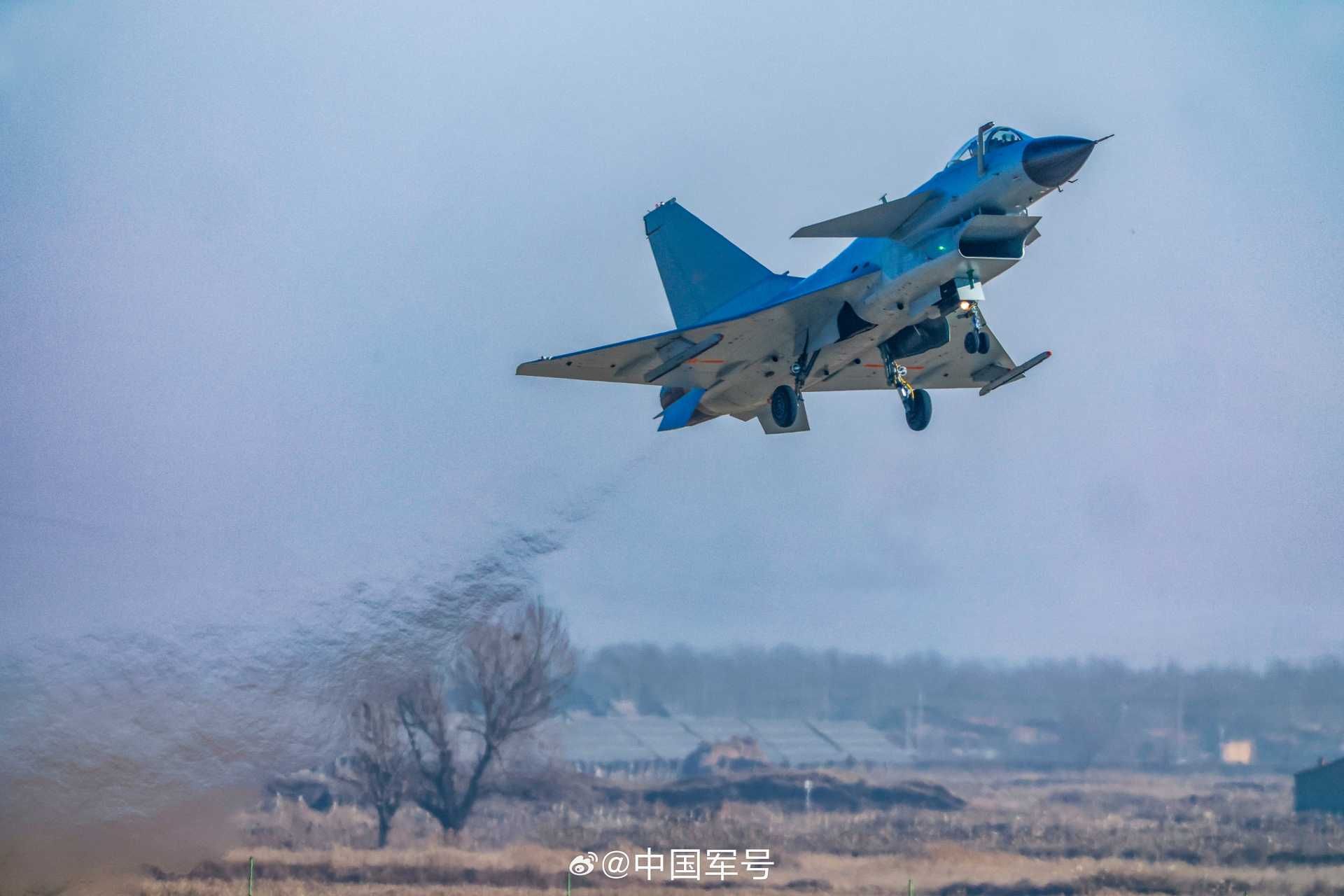Breaking News
China proposes J-10CE fighter jets to Brazil in exchange for strategic satellite launch site access.
According to information published by Veja on January 4, 2025, China offered the Brazilian government a batch of Chengdu J-10 fighter jets. Discussions with Brazil’s military authorities did not advance due to budget constraints and a decision to prioritize the Saab Gripen fighter program. Officials at the Defense Ministry indicated that China frequently offers military equipment to Brazil, but financial limitations often prevent progress.
Follow Army Recognition on Google News at this link

China's proposal included the potential donation of J-10CE fighters in exchange for Chinese access to the Alcântara Launch Center in Maranhão, a satellite launch site. (Picture source: Chinese social media)
Brazilian media have also reported a renewed proposal from China involving the Chengdu J-10CE, a multirole fighter suggested to fill the operational gap between Brazil’s Super Tucano and Gripen fleets. This proposal included the potential donation of J-10CE units in exchange for Chinese access to the Alcântara Launch Center in Maranhão, a satellite launch site. Brazil rejected the proposal, citing financial constraints and strategic priorities. Analysts have suggested that granting Chinese access to Alcântara could create challenges with Brazil’s other defense partnerships. The Defense Ministry’s response aligns with its budgetary limitations and focus on existing alliances.
China proposed providing J-10CE fighter jets to Brazil in exchange for access to the Alcântara Launch Center, located near the equator. This location allows for more efficient satellite launches into geosynchronous orbits, reducing fuel requirements due to its geographic advantage. Such access would enable China to enhance its satellite launch capabilities while expanding its activities in Latin America. The offer of J-10CE jets was positioned as an incentive to support Brazil’s air force modernization while potentially granting China a strategically valuable foothold in a key space launch site.
Brazil is working to replace its aging Northrop F-5 fighter fleet, which has been in service with the Brazilian Air Force (FAB) since the 1970s. The F-5 fleet was acquired in several batches: 42 units in 1973, 26 units in 1988, and 11 second-hand units from Jordan in 2000. Modernization efforts from 2005 to 2020 extended the fleet’s operational life. However, the F-5 is expected to be retired after 2030, prompting the FAB to explore options to complement its Gripen NG fighters while maintaining operational flexibility with two-to-three fighter types.
In September 2024, discussions occurred between Brazil and India regarding the HAL Tejas as a potential candidate. Brazilian Air Force Commander Lieutenant Brigadier Marcelo Kanitz Damasceno met with Indian defense officials, including Air Chief Marshal V.R. Chaudhari and Chief of Army Staff General Upendra Dwivedi. The Tejas, which first flew in 2001 and entered service in 2016, is a single-engine multirole aircraft with variants such as the Mk1, Mk1A, Mk2, and a naval version. The Tejas Mk1A includes an AESA radar and advanced avionics, while the Mk2 is expected to feature a more powerful engine and updated systems. Damasceno noted that Brazilian regulations require maintaining two or three fighter types, and the Tejas could potentially enter service after the F-5’s retirement.

Brazil is working to replace its aging Northrop F-5 fighter fleet, which has been in service with the Brazilian Air Force (FAB) since the 1970s, by exploring several options to complement its Gripen NG fighters while maintaining operational flexibility with two-to-three fighter types. (Picture source: FAB)
Under the F-X2 program, Brazil signed a $4.25 billion contract with Saab in 2013 to acquire 36 Gripen NG fighters, including 28 single-seat F-39E and eight dual-seat F-39F variants. This program aimed to replace the F-5 fleet and included technology transfer provisions, with Embraer involved in production and integration. The program, initially scheduled for completion by 2027, has faced delays due to budgetary constraints. By late 2023, nine Gripens were operational at Anápolis Air Base, with the 1st Air Defense Group focusing on air defense missions. Plans are in place to establish a new squadron for air-to-ground operations, reactivating the Pacau Squadron for this purpose.
The Gripen’s design includes a delta wing and canard configuration powered by the GE F414-GE-39E turbofan engine, achieving speeds of Mach 2. It is equipped for air-to-air combat, ground attack, and reconnaissance, with a combat range of approximately 1,500 kilometers and a ferry range of up to 4,000 kilometers using external fuel tanks. The aircraft’s AESA radar, electronic warfare systems, and advanced avionics provide operational capabilities. It has ten hardpoints and can carry up to 7,200 kilograms of payload, including missiles, bombs, and reconnaissance pods. Despite these capabilities, financial and logistical challenges have delayed its delivery.
Observers note that the Brazilian government lacks sufficient resources to complete existing deliveries of the Gripen, which have been delayed due to budget cuts. On September 24, 2024, the FAB reported the arrival of another Saab F-39 Gripen (tail number 4108) from Sweden via the port of Navegantes. After technical preparations at Navegantes International Airport, it was transferred to Anápolis Air Base. Pilot training has been supported by the Swedish Air Force’s Phoenix Squadron. Additionally, on March 13, 2024, the FAB considered creating a new Gripen squadron at Anápolis Air Base. An order dated March 5, 2024, established a working group to plan the reactivation of the 1st/4th GAV Pacau Squadron for air-to-ground missions, allowing the 1st Air Defense Group to focus on air-to-air roles. By December 2023, the 1st Air Defense Group operated seven Gripen fighters, including a test aircraft (4100) undergoing evaluations at Embraer’s flight test center in Gavião Peixoto.

Under the F-X2 program, Brazil signed a $4.25 billion contract with Saab in 2013 to acquire 36 Gripen NG fighters, including 28 single-seat F-39E and eight dual-seat F-39F variants. (Picture source: FAB)
The FAB is also modernizing its Embraer A-29 Super Tucano fleet, upgrading 68 aircraft to the A-29M standard beginning in 2025. Enhancements include BR-2 data links for interoperability with Gripens, new cockpit displays, electro-optical sensors, laser-guided weapons, and reinforced protection systems. These upgrades aim to extend the aircraft’s service life by 15 years, supporting roles in low-intensity conflicts, border patrols, and training missions. The FAB is also developing an ISR-capable variant of the C-390 Millennium for maritime patrol, incorporating advanced sensors and synthetic aperture radar.
Brazil plans to enhance its helicopter fleet by acquiring 12 Sikorsky UH-60M Black Hawk helicopters through a $950 million Foreign Military Sales agreement with the United States. Deliveries are expected between 2025 and 2029 to replace older UH-60L and Airbus AS532UE Cougars. These helicopters are intended for troop transport, medical evacuation, and disaster response. Additional modernization efforts include adapting existing platforms for ISR roles to address territorial security and disaster management requirements.
The Chengdu J-10 Vigorous Dragon, developed by the Chengdu Aircraft Corporation, is a single-engine, multirole combat aircraft featuring a delta wing and canard layout. It was introduced in 2004 and has been developed into several variants, including the J-10A, J-10B, and J-10C. The export-oriented J-10CE includes an AESA radar, IRST system, and compatibility with advanced munitions like PL-15 missiles. It is marketed as a cost-effective option for multirole missions. The PLAAF operates over 600 J-10s, and the J-10CE has been exported to Pakistan, which received 36 units in 2022. Bangladesh and Egypt have evaluated the J-10CE, with Bangladesh reportedly considering 16 units. Other countries, such as Saudi Arabia and Sudan, have shown interest in the platform.
Integrating the J-10CE into Brazil’s fleet could provide additional operational flexibility, as its AESA radar and compatibility with PL-15 missiles offer multirole capabilities. However, interoperability, training, and maintenance infrastructure requirements, as well as geopolitical considerations, would need to be addressed. Brazil’s focus on existing programs and partnerships reflects its approach to managing financial and strategic challenges in modernizing its air force.

Introduced in 2004, the Chengdu J-10 Vigorous Dragon is a single-engine, multirole combat aircraft featuring a delta wing and canard layout which has been developed into several variants, including the J-10A, J-10B, and J-10C. (Picture source: AVIC)


























